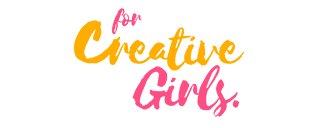How does joy or happiness affect your productivity? How does being happy help you become a better creative, or how does it fuel your capacity to create?
To answer these questions, we talk to Samantha Clarke, a Happiness Consultant and Founder of Growth and Happiness Co.
Samantha Clarke is the founder of Samantha&. Her mission is to liberate tired company cultures from unhappy work environments by delivering individual & group happiness coaching and consulting on wellbeing strategies. She has achieved big results with an impressive clientele including Mediacom, Innocent, Shopify, Viacom, DADI, P&G, Dishoom and many more.
She also created the Growth and Happiness online school to provide individuals with courses & training programmes to help them find their work happiness or create it for others.
Samantha is at her happiest delivering lectures, workshops and masterclasses for The Guardian, Soho House Group, Stylist Live and The School of Life. Check out her podcast “Conversations with Samantha&” for interviews with philosophers, technologists, and psychologists on the impact of technology on happiness. 
For Creative Girls: We are so awed by what you do Samantha! How did you become a Happiness Consultant and what does being a Happiness Consultant entail?
It’s a been beautiful and multifaceted journey to get to this point. I worked originally in Advertising and then in Retail Trend & Innovation, studying footwear and fashion design in the evenings to overcome my work woes. I started out making shoes and with recession putting the kibosh on my label I began looking at my transferable skills. I was approached by a few people who had been made redundant and wanted to freshen up their personal brands or step out as entrepreneurs. So I put my branding and fashion skills to use and started doing some style therapy. As I spent time with my clients, conversations always drifted off to various work struggles and woes. I became essentially a changing room work agony aunt. But I loved it. I decided to return to study once again and delved into the world of psychology, coaching and then one opportunity led to another. Clients invited me into their companies to do workshops, talks and then I started working with a remote working company who were desperate to do something unique when it came to their people development and HR and so I became their Head of Happiness. With further training and development, my work today spans to creating happiness and wellbeing strategies, facilitating talks/workshops and coaching leaders and employees in companies. For individuals, I provide advice via talks, courses, and workshops to find happiness at work and/or create it for others in the workplace.
The Growth and Happiness Online School is very fascinating, what moments led you to create a school/business out of the concept of Happiness?
I regularly give talks at companies and for places like Soho House Group, the Guardian and The School of Life. I would receive emails from people asking for help/advice and coaching living outside of London or unable to attend a particular session. Alongside this, I also got a lot of questions from people asking me how can I do what you do? So it sparked a whole chain of course and training programme ideas based on the feedback I was receiving and in areas that I wish I had when I was starting out.
I’ve spent the last 2 years learning, developing and refining three offerings I have at the moment.
– Be Happy First – helping you to be happy in work and life.
– Find Your Work Happiness – helping individuals transition out of their career and start a portfolio career.
– Create Growth & Happiness at work – my signature programme for those who want to create happiness for others.
I have a whole mood board full of future ideas and programmes.
https://www.instagram.com/p/BiU05HSALSW/?taken-by=growhappyschool
Balancing happiness and the turmoils of work is a tricky, slippery slope most of the time, what are the first steps you’ll recommend to anyone seeking to do that? / How can happiness be induced more and more into a Creative Person’s life?
Balancing personal happiness and the ups and downs of work was one of the main reasons I created my course ‘Be Happy First’. I believe wholeheartedly that you can’t serve from an empty well. Whether you are a nurse, designer, manager, employee or company founder giving your best requires that you self-nourish and look after your happiness first.
The Be Happy First mantra has 7 steps
– Be – Be present, aware – By taking the time to pause and reflect this can help become aware of what habits you need to change or adapt to enhance your creativity.
– Expose – Understanding how we can move.
– Hang Up – What do you need to let go of in order to be true to your goals and values. Often what impacts our creativity is worrying about other peoples expectations.
– Appreciate – Understanding gratitude and how to give and receive.
– Pick up – Identifying how to challenge yourself and pick up new strengths. As a creative person, it’s important to not only hone your craft but also be receptive and open to continuous learning.
– Plug the gaps – This touches on our support circles and whether we have the right support to take us to the next level.
– Your Words – Lastly monitoring your language is key to navigating difficult experiences at work. How you talk about yourself to yourself and to other people not only shapes your confidence but also peoples’ perceptions of you.
This type of self-care is an essential doctrine for any creative seeking to create work/life harmony.
https://www.instagram.com/p/BhwFXdsnoJA/?taken-by=growhappyschool
There’s a constant debate about how doses sadness or happiness affects creativity, what are your thoughts on that? Are people more prone to being creative when they are sad?
I like to think our best creative thinking comes when we have the space to play and embrace boredom to open ourselves up to new ideas. Unfortunately, I think we currently don’t give ourselves enough time to pause and reflect. I find that most people are constantly looking for distraction either from the sadness, from work or seeking happiness externally, rather than leaning into whatever is happening at the moment.
Related: Brene Brown on using regret as a tool for Growth.
How can organizations create company cultures that are Happiness-based as well as Productivity-based? Such that even when they scale and grow, they won’t lose their happiness factor.
So first, no two companies are created the same and also what means happiness for one is not the same for the other. I think it’s important to set the right foundations in any startup allowing them to scale effectively. As well as engage not only Founders but also employees to co-create happiness for all. I get under the skin of each company by doing a sensing journey and happiness health-check to identify what their happiness factor is and what needs to change to improve across my signature 4 happiness pillars.
The four pillars are – Head & Heart, Work & Life, Communicate & Connect, Digital & Mindful.
By taking the time to cast an eye over all nooks of a business I can decipher where there deficits in any pillar and then make recommendations and implement the right measures.
· Head and Heart – How is the company equipping employees to bounce back from adversity, build resilience as well as tenacity, problem-solving and strong self-leadership skills. Does an individual have autonomy to deliver work at the best?
· Work and Life – What can the company do to develop processes and structures that support collaboration, connection, and creativity? Are there opportunities for flexible working? This pillar also addresses the component of work-life harmony (I dislike the word balance) and how work is sculpting this for better or worse.
· Communicate and Connect – How can employees build better relationships with their co-workers? What causes communication breakdowns in the office that make work difficult and unpleasant?
· Digital and Mindful – How does technology impact happiness and wellbeing at work? Can a balance be found between mindfulness practices and nature vs constant tech stimulation and distractions?
By helping a company to closely monitor this, then you can maintain consistent happiness as you scale and grow.
https://www.instagram.com/p/BhhLzJoBrF4/?taken-by=growhappyschool
We love understanding personal productivity. Do you have a daily routine that keeps you productive?
Yes, I have a wind-up and wind down routine – so easing into my morning and relaxing into sleep time.
In the morning I meditate or just sit in silence with something hot, voice note any ideas/intentions/thoughts that come to mind, stretch or do a Qigong routine and then make a smoothie or juice 🙂
Evenings when I’m not speaking or teaching, I set an alarm that alerts me when I need to step away from the computer and phone and prepare to wind down. I make a list of the top three things I need to do the next day. Then make some tea and light some of my favourite candles. I love anything with vetiver, sets me up for good sleep. I may reflect on the day, update my daily gratitude list or curl up with one of the many books I read on rotation.
Tell us about 3 women you admire.
Sharmadean Reid
Esther Perel
Bozoma Saint John
Share your favourite quote with us.
“Life shrinks or expands in proportion to one’s courage”





